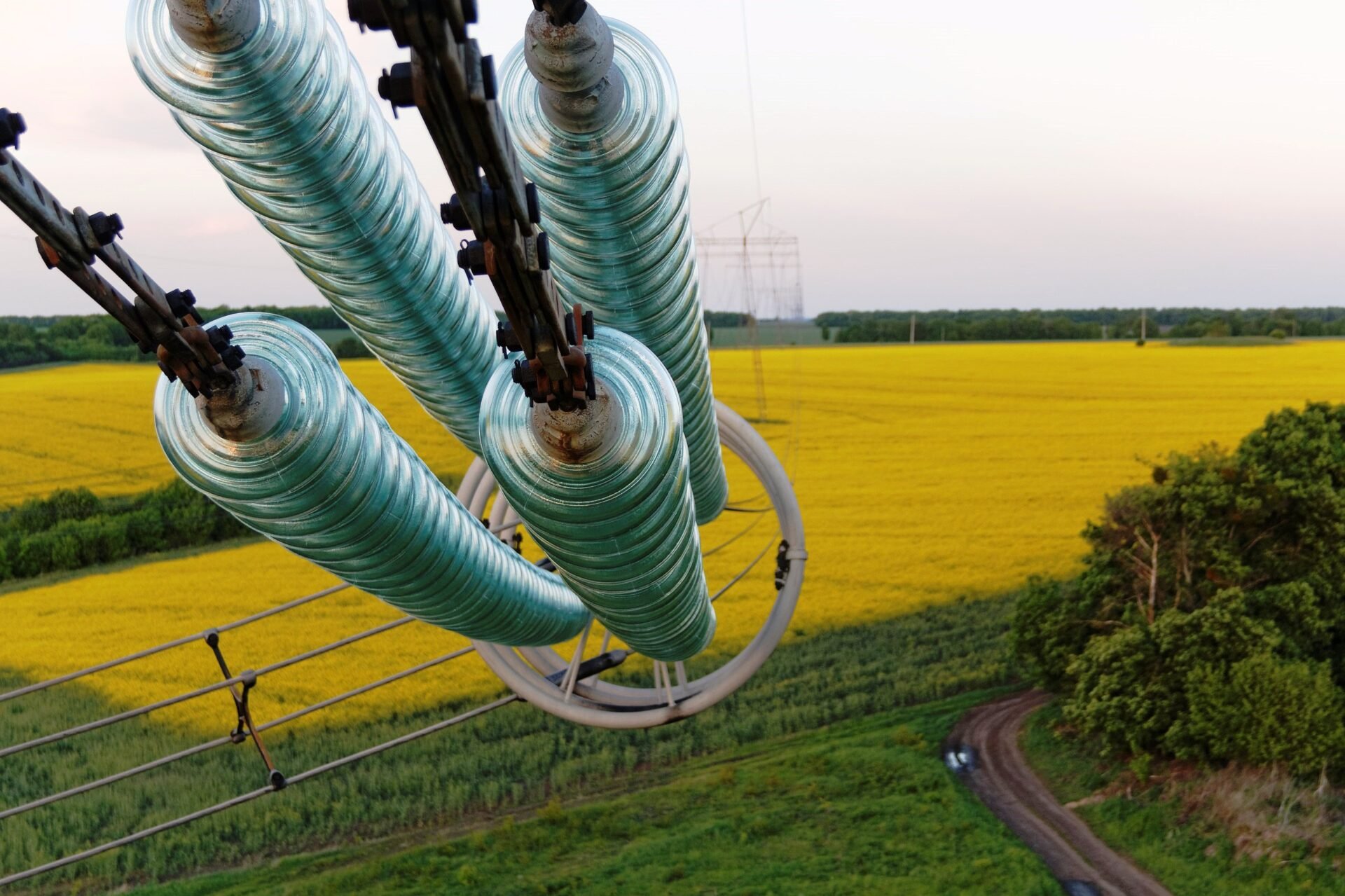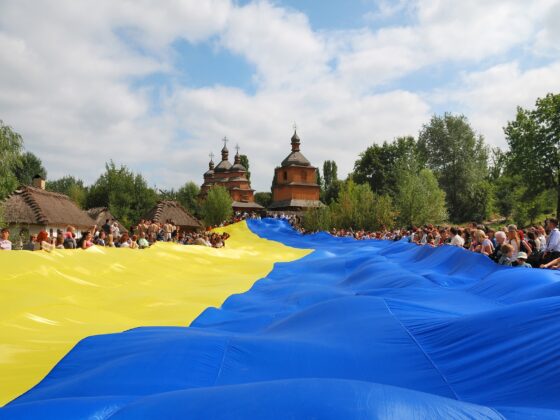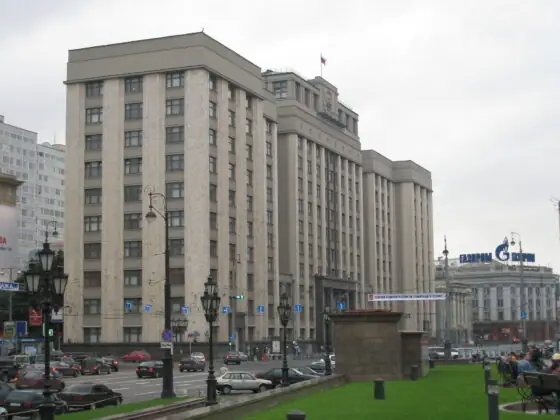It has been six weeks since Russia opened a second front in its war against Ukraine. On October 10, volleys of drones and rockets began hammering the electricity network, and within weeks, Ukraine lost half of its pre-war electric capacity. Blackouts and lack of power and water have shaken up normal life and social cohesion throughout the country. Ukraine’s utility workers were catapulted into a race against the clock—to repair faster than Russia can destroy. Ukraine’s two main electricity providers, state-owned Ukrenergo and private company DTEK (belonging to billionaire Rinat Akhmetov), along with smaller energy companies, constantly scramble to repair and rebuild.
Moscow’s tactic has been widely commented on as an attempt to force Ukraine into submission by literally “pulling the plug” on society. The destruction of civilian infrastructure is a hallmark of modern warfare meant to sap resistance. Highly urbanized populations dependent on integrated utility systems are especially vulnerable, with the conflicts in Ukraine, Iraq, and Syria as germane examples. In Ukraine, the swiftness of infrastructure repairs has been applauded as social resilience. Less has been said about the actual sources of this capacity to withstand and quickly overcome the destruction. Ukraine’s power, water, and gas companies have been maintaining essential public services since the war in Donbas began in 2014. Argued here is that the sources of resilience are embedded in Ukraine’s technological and economic history and social background. At the same time, the capacity to withstand multiple aggressions on the system by public utilities workers are shaped by the Soviet and post-Soviet experience of both crisis and state service. In turn, the continuity of critical services throughout the war connects and consolidates local communities.
Ukraine’s Utility Networks Pummeled by War
A country-wide integrated electricity network
Ukraine’s power supply system is organized as a unified country-wide system: the Unified Energy System of Ukraine, centrally managed by Ukrenergo. Power-generating facilities (fossil, nuclear, hydro, green) are connected to distribution networks and to neighboring countries. Until February 2022, the system was integrated into the broader Russian/Belarusian electric system—a technological legacy of the Soviet Union.
Integrated electricity networks mean that production and consumption can be balanced out thanks to the geographical scale, but the war has put extra weight on a system that has chronic inefficiencies. For a long time, Ukraine entertained a relationship of energy co-dependence with Russia that represented both a threat and an opportunity. Since 2014 it has increasingly worked toward EU integration, which has required liberalization and modernization. In 2017 the parliament passed a law on the electricity market, Ukrenergo improved its governance rules, and Kyiv signed an agreement to merge with the system of continental Europe by 2023. This synchronization was moved up by the war.
By coincidence, on the day of the full-scale invasion, the Ukrainian grid was being tested to work independently from the Russian/Belarusian grid and was in “island mode,” operating autonomously. A few days later, the governing body of European transmission operators (ENTSO-E) agreed to an emergency synchronization. By July, Ukraine was cleared to import and export electricity, which provides flexibility and stability to its system but cannot protect it from targeted damages.
An electric inventory of war
Electricity has been in the Kremlin’s crosshairs since 2014. Russia’s offensive establishing control over Crimea and parts of eastern Ukraine chipped away at the country’s unified energy system. The front line in Donbas cut Ukrainian energy off from resources. Electricity supply was consequently disturbed throughout 2014-2022, causing numerous blackouts and breakdowns to water and heating supplies. By 2017 the demarcation line had hardened into a border when Kyiv established a trade blockade, and the separatist authorities confiscated Ukrainian assets. Electricity transmission between occupied territories and the unified grid was mostly but not completely cut off. Collateral problems caused by damage to electricity generation and transmission included large-scale disruptions to water supplies, disruptions to heating coal supplies, financial crises in the electricity sector, and environmental risks. However, the system overall was not impacted country-wide. This began to change after the February full-scale invasion.
Since February 2022
The Russian military advance into parts of eastern, central, and southern areas of Ukraine damaged many power facilities. A counter-offensive reclaimed territories from April onwards, and repair crews were sent in with considerable success in the spring and summer but faced more difficulties in the fall.
Power sources and distribution networks in areas under Russian occupation are difficult to map but draw a picture of unstable and spotty provision. Kherson was only intermittently connected to the Ukrainian grid until at least July. Mariupol was not, and Moscow’s plans to connect it to the Russian grid appear to have failed. Some populations in occupied territories are supplied by electricity from systems operating in local island mode, such as the Zuevsky plant near Donetsk. The energy generated by the Zaporizhzhia nuclear power plant (under Russian occupation) had been a source of electricity in both the occupied territories and Ukrainian-managed territories, intermittently maintaining a connection across the front line with the Ukrainian grid. In September, its last reactor was shut down out of safety concerns but still requires electricity for cooling.
Nine months into the war, all of Ukraine’s regions have been affected. A majority of thermal power plants have been damaged. As a result, Ukraine’s power generation currently relies primarily on nuclear energy (75 percent), coal (24 percent), and hydropower (1 percent).
Why October 2022 signaled a new Russian strategy
While damages to utility and electrical systems in war—targeted or collateral—are not new, Moscow’s October attacks constitute a new strategy for two reasons. First, the Russian army newly introduced Iran-made Shakhid (“suicide”) drones. These low-flying UAVs are more difficult to intercept by Ukrainian anti-missile defense. Although their explosive charge is too small to create large-scale damage, they are extremely effective on equipment that is exposed, such as transformers and switchgear. Second, Russian attacks have specifically targeted this transmission capacity. Ukraine’s surviving generation capacities were concentrated in the western/southern areas, notably thanks to the Yuzhnoukrainska, Khmelnitska, and Rivnenska nuclear power plants that remain in operation. Targeting them directly would require far-flung missiles and risk a nuclear accident. Nonetheless, targeting utilities is very effective. Transformers, substations, and cables are the lifelines of Ukraine’s country’s integrated system.
Facing the winter: weak nodes in the system
The network is made sustainable by the grid’s capacity to balance out variations in production and consumption by carrying electricity to where it is needed on a vast geographical scale. Electricity cannot be stored for a rainy day. The electricity produced in one generating facility—mostly coal-fueled, but also nuclear-powered—is made to be transmitted and re-distributed to other parts of the country and even to or from the European grid over pre-established routes. If a transmission route collapses, the deficit of electricity in one region cannot be compensated by generation in another. Ukrainian repair crews have been setting up walls to protect the open-air transmission equipment.[1] Still, the Russian attacks succeeded in crumbling the Ukrainian unified grid into islands of self-contained and fragile mini-systems.
The list of needed spare parts and equipment ran over 12,000 items in November. The difficulty of replacing transmission equipment, especially large transformers that are both expensive and take long to produce, was already noted by NATO in a 2020 report on the consequences of hybrid warfare on Ukraine’s energy system. These difficulties are compounded by Soviet-era specifications of many of the parts. There are no reserves because the production lines for the relevant parts in Ukraine stopped working due to the war. Ukrenergo has scoured former socialist countries of Central Eastern Europe (which also used to have such equipment) for needed parts with some success, but DTEK, for example, says it is difficult for a private company to access those networks[2] and has improvised at times, such as on welding damaged cables.[3]
Post-Soviet Hardship Both Generates and Limits Resilience
Ukraine’s infrastructure resilience was shaped by past experience, the war in Donbas, the 1990s, and Soviet social legacies.
The war in Donbas, a foundation of expertise
With seven percent of Ukrainian territory under occupation and an active conflict in Donbas since 2014, critical infrastructure companies have collected experience in rapid intervention and accommodation. Thousands of technicians, workers, engineers, managers, and local authorities in the communal services sector have accumulated expertise working under duress. In 2014-22 technicians intervened to repair power lines and pipes in the combat zone during ceasefires. But thousands of ceasefire violations during repair works were recorded, and utility workers have been injured and killed.
Within days following the February 24 full-scale invasion, companies such as Ukrenergo, Water of Donbas, and DTEK adapted technical, organizational, and security procedures according to their experience. Municipalities and local utilities were left to fend for themselves in often extreme conditions. In Mariupol, where power and water supplies broke under shelling, janitors drained heating pipes to provide some drinking water. Over time, such wartime expertise was disseminated nationwide.
DTEK mobilized its managers and workers who had wartime experience to train colleagues. The company relocated operational staff to safer areas and organized the extraction of families from combat zones. By April, when the Russian army had abandoned its positions in the Kyiv and Chernihiv regions, dozens of intervention crews had received training to operate in dangerous areas. A relatively straightforward repair, such as a torn cable in peacetime, requires a complex interaction of material and human factors in wartime, such as coordination with military demining crews, briefing technicians on site-specific specific dangers, handling the logistics of food, shelter, and water for workers, and finding parts.
Soviet and post-Soviet social continuities as a source of resilience
The post-Soviet communal services sector in the 2000s retained some of the attributes of the Soviet-era urban utility system. According to New School professor Stephen Collier, it forged a specific “post-Soviet social” where adaptation of communal services to liberal reforms was selective, reprogramming some aspects while leaving hardware and some norms of social welfare in place. Though Collier’s study concerns Russia, many aspects resonate with the experience throughout the former Soviet space, including Ukraine.
Principles of public service have survived the break-up of the Soviet economic system, the subsequent economic upheaval, stop-and-go policies of liberalization, and predatory captures of industry and public resources. Still, even in the 1990s, when Ukraine’s economy was failing, apartments were mostly heated and water (usually) flowed. Many Ukrainian utilities, such as sewage and water, have not been privatized and are run by local public companies as community services under legislation protecting the consumer. Although the energy market was partly privatized, electricity tariffs are regulated and capped. In 2018, Ukraine’s highest court confirmed that providers are forbidden to switch off cold water in cases of non-payment. The same goes for heating. Consequently, the state is still a guarantor of public welfare exercised through utility companies.
Parts of Ukraine’s corporate/services sphere retained other attributes of Soviet society, such as fixed salaries, collateral services such as polyclinic access, sanatoria, and children’s camps. In their internal corporate culture, companies tap into corporatist or paternalistic traditions to ensure stability and occupational belonging.[4] This is especially prevalent in large companies such as Water of Donbas (which employed 11,000 people), DTEK (60,000), and Ukrainian Railways (400,000). Another factor of inclusive corporate culture is professional validation. Manual laborers such as plumbers and electricians employed by utility companies (such as DTEK, Water of Donbas, and Ukrenergo) receive specialized vocational training and are qualified to grow ranks.
The framing of corporate culture around principles of the kollektiv has been sharpened by the war through patriotic corporate messages and concrete measures such as evacuating employees and families. At both DTEK and Water of Donbas, repair interventions are executed by brigades whose members work together regularly and develop tight interactions based on trust and cooperation in the face of danger.[5] These paths of legitimation are reinforced by working together for a community cause.
Public utilities as spaces of occupational practices of belonging
Utility companies, international partners, and consumers are progressively being integrated into broader webbings of collaborative involvement. At the local level, utility companies interact horizontally to find “fixes.”[6] In Artsyz in the Odesa region, the destruction of a substation cut off power and water completely last May, and the local council took swift steps to centralize resources from across the district.[7] In Mykolaiv, local authorities coordinated the laying of a pipeline to the Black Sea. In Kyiv, over a thousand emergency power and heating stations have been (or are being) set up to provide for three million people.
The online sales platform Rozetka.ua has seen sales of power banks, generators, wood stoves, and candles surge. Legislation under the state of emergency suspended fines for late payments of services. Despite these extra protective measures, massive unemployment, and the displacement of close to half of the population, household payments for electricity stand at 70 percent.[8] This consumer responsibility resonates with appeals by local authorities and utility companies to pay for utilities as a patriotic action. This creates an implicit connection between public services, citizen-consumers, and the state. The civic bond shaped by utilities as extensions of the Ukrainian state resonates also in occupied areas. It shapes a narrative of patriotic infrastructural engagement—narrated by the government, local authorities, and utility companies, where both the consumer and the utilities repair crews are heroes.
Conclusion—Social (Re)construction through Infrastructure Repair
By nature, large-scale infrastructure networks are vulnerable, especially in a hyper-connected, computerized world. Critical supply networks are locked into a chain of interdependence: water, sewage, road, railroad, airway, and banking/finance networks—to name a few—depend on electricity networks, which itself is tied into an automated communication network. In 2015-17 several successful hacks into the computer network of Ukrenergo caused the electric system to collapse into blackouts. Damages to the electric system upstream in the Donetsk region, in addition to damages to the pipelines themselves, disrupted the water supply over almost 300 kilometers downstream to Mariupol in 2014, affecting millions.
International networks are providing many solutions. Multi-million-dollar aid for digital security from the EU and the United States boosted protection from cyber-attacks. International and local organizations mobilized to supply water in Donetsk and now throughout the country. Ukraine continues to seek infrastructure equipment just as much as it needs weapons—for example, having key spare parts helps it ward off attacks via stable and operational anti-air defense systems.
Electricity is a condition of economic, social, and biological survival. But it also has two important social qualities. First, electricity powers the “normality” that structures daily life, such as in Ukraine’s condition of extreme uncertainty. Second, the structure and provision of utilities connect the public and private domains—citizens with the state and each other. “Ordinary citizenship” mediated through the provision of critical public services can consolidate local communities in times of upheaval from the bottom up. Repairing Ukraine’s infrastructure is thus already a form of social reconstruction.
[1] Interview, Liudmyla Prybytkova, international affairs manager, DTEK, October, 1 2022.
[2] Interview, Prybytkova, DTEK.
[3] Interviews with DTEK managerial and technical staff, Ismail–Artsyz, Odesa region, August 25-26, 2022.
[4] Observation and interviews conducted at the Water of Donbas company (May 2018-February 2022) and DTEK-Seti (August 2022) as well as corporate digital sources.
[5] Interviews with Voda Donbasu workers, managers, accountants in Avdiyivka and Toretsk (2018-22)
[6] Observation and interviews conducted in Avdiivka and Toretsk (May 2018-February 2022) and DTEK-Seti (August 2022) as well as corporate digital sources.
[7] Interviews with local council members, DTEK-seti regional director Dmytro Hrihoriev. Artsyz, Odesa region August 26, 2022.
[8] Interview, Prybytkova, DTEK
Sophie Lambroschini is a Petrach Fellow at the Institute for European, Russian and Eurasian Studies (IERES) at the George Washington University, and a Researcher in Eastern European Studies at the Centre Marc Bloch in Berlin where she is Principal Investigator of a collaborative project about the everyday adaptation of populations to the uncertainty of geopolitical risk in Ukraine and Moldova (LimSpaces).











